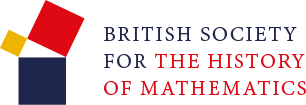Time Zones I: “Half an Hour Later in Newfoundland”
Time Zones I: “Half an Hour Later in Newfoundland”
Yom shishi, 10 Sivan, 5781.
Our title “Half an hour later in Newfoundland” is a standard joke line in Canadian comedy and is based on the fact that Standard Time on the Island of Newfoundland is in Zone P* = EST + 1h 30m (Toronto) = UTC - 3h 30m (London, UK [London, Ontario, which shares EST with Toronto, is also on a River Thames, but that’s another story]). The rest of the Province of Newfoundland and Labrador, that is mainland Labrador, is in Zone Q = Atlantic Standard Time = EST + 1h = UTC - 4h.
The joke works because national broadcasters, especially the Canadian Broadcasting Corporation / Radio Canada, send out their programmes simultaneously in the Maritime Provinces (New Brunswick, Prince Edward Island, and Nova Scotia), who are all on Atlantic Time, and in Newfoundland and Labrador. An exception is the local CBC television news shows(Here and Now in N&L, out of St. John’s, N&L) that all start at 6:00pm local time. To switch to coincide with national prime time programming at 7:30pm CBC St. John’s runs re-runs of The Rick Mercer Report from 7:00 to 7:30pm.
As a practical matter I had to be aware of this schedule glitch on my several pre-pandemic visits to Newfoundland. I’m a big life-long fan of CBC Radio. So, for most shows that required the usual half hour adjustment. However, on Sundays the schedule was totally different thanks to the semi-centennarian plus show Cross Country Check-up, a live to air Canada-wide phone-in show. It’s been running from 4:00pm to 6:00pm in Toronto, and thus 5:30pm to 7:30pm in local time in St. John’s, N&L (which is not the same place as St. John, New Brunswick).
One such visit was to attend the Canadian Society for the History and Philosophy of Mathematics (CSHPM) conference held in conjunction with the Canadian Mathematics Society (CMS) at the Memorial University of Newfoundland (MUN) in St. John’s. The first day of our conference was the Friday, with our first session being at 8:00am local time, which would have been 6:30am body time for delegates from the nearby Eastern Time Zone, like me. Since a friend of mine from Maine (also with a 6:30 body time) was up first, I made sure to get to our conference room a bit early so there would be someone in the audience.
CSPHM regularly holds its meetings in conjunction with CMS just as it does with BSHM. In another parallel with BSHM, since the start of the pandemic, CSHPM has moved on-line, including a very successful monthly series of Zoom-based Colloquia, fairly evenly balanced between Philosophy and History of Mathematics.
For most of them, the start time was 11:00am, for its Pacific Time (Daylight or Standard) Vancouver host institution, Simon Fraser University (SFU). For me, in walking distance of the University of Toronto, they were at 2:00pm Eastern Time (D or S) and, for the BSHM (whether at the University of St. Andrews or Cambridge University) at the convenient evening hour of 7:00pm British Time (Summer or Regular).
Though there were some concerns when we switched last fall to Standard Time, such as getting the time right for the Universities of Saskatchewan (in Saskatoon) and Regina, the time change went fairly smoothly. (The Province of Saskatchewan remains on Standard Time all year long.)
In the Zoom era, audiences are not restricted to North America and the British Isles. For time zones in other parts of the world, we could always refer to the Royal Astronomical Society of Canada’s annual Observer’s Handbook. The section on “Time”, pp. 39-47 in the 2021 edition, has a full-page “World Map of Time Zones”.
We certainly ran with this opportunity for HPM internationalism when, last December 11, we had Nikita Agarwal, from the University of Bhopal in India, telling us the story of the Iranian mathematician, Maryam Mirzakhani (first woman to be awarded a Fields Medal).
As always, it was on a Friday, with Prof. Agarwal having an early breakfast so she could enlighten us at 7:30am Indian Standard Time. As ever, Nic Fillion chaired skillfully from SFU from 6:00 pm PST, while I joined at 9:00pm EST. I successfully stayed awake for the entire talk but drowsed off for parts of the question period. As far as I could see from the Participants list, there was no one there from the BSHM who stayed up for a 2:00am BT=GMT=UTC start time on Saturday, December 12.
Such an intercontinental scholarly event was challenging but doable, thanks to the Canadian scientist and engineer Sandford Fleming (1827-1915), who invented the concept of standard time zones, but even more importantly sold it to the world. But for him, we would all have had to work out how our own local solar times would have compared with either 7:30 am Bhopal Time or 6:00 pm Vancouver (or better yet suburban Burnaby) Time.
Again, from OH 2021’s “Times of Sunrise and Sunset”, Nic would have had to calculate his local time as being 12 minutes earlier than PST and mine would have been 18 minutes earlier than EST. And anyone in the audience from the Université du Québec à Rimouski (UQÀR) would have had to add 26 minutes to EST. And so on and so forth throughout the world. In fact without Fleming’s brilliant and herculean efforts we wouldn’t even have had any standard times to work this out against.
He was certainly worthy of being dubbed Sir Sandford by Queen Victoria in 1897! By the way Victoria (B.C.) Time is 13 minutes earlier than Pacific Standard Time.
